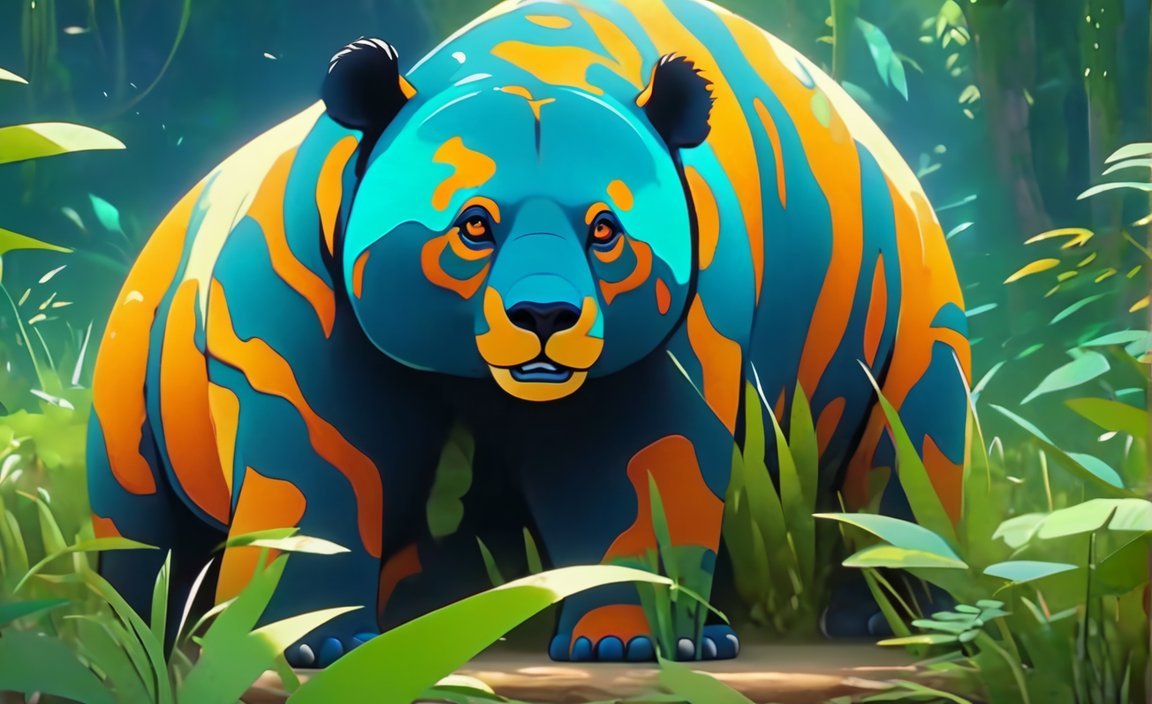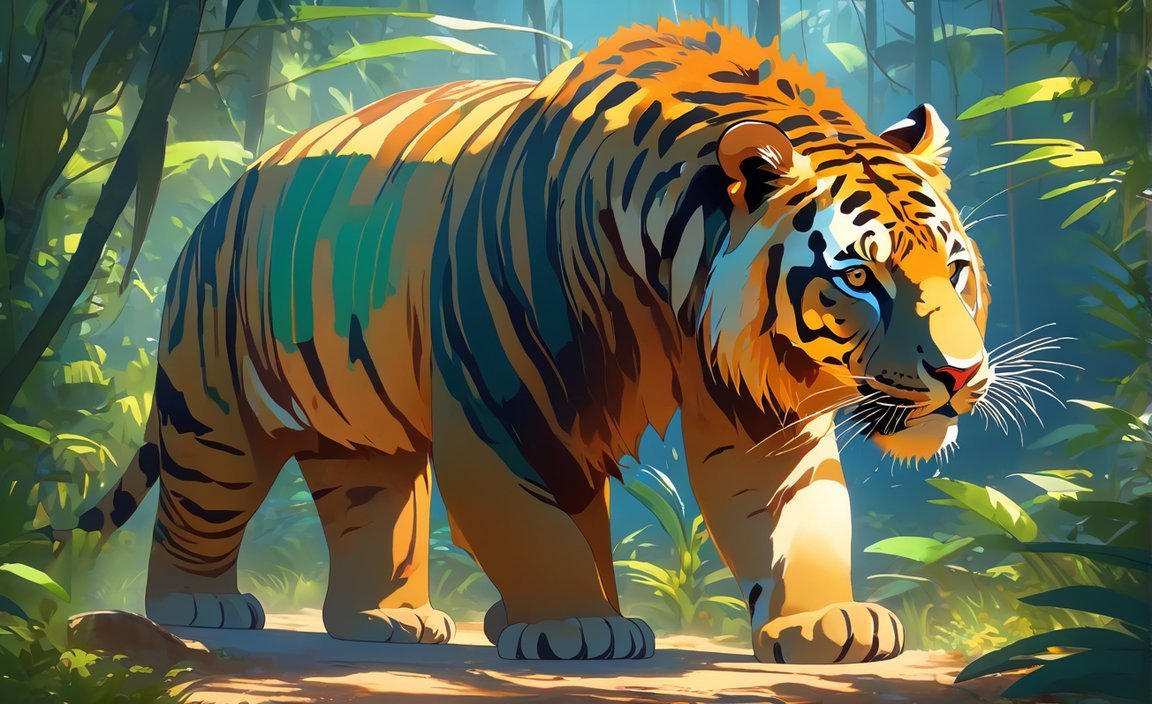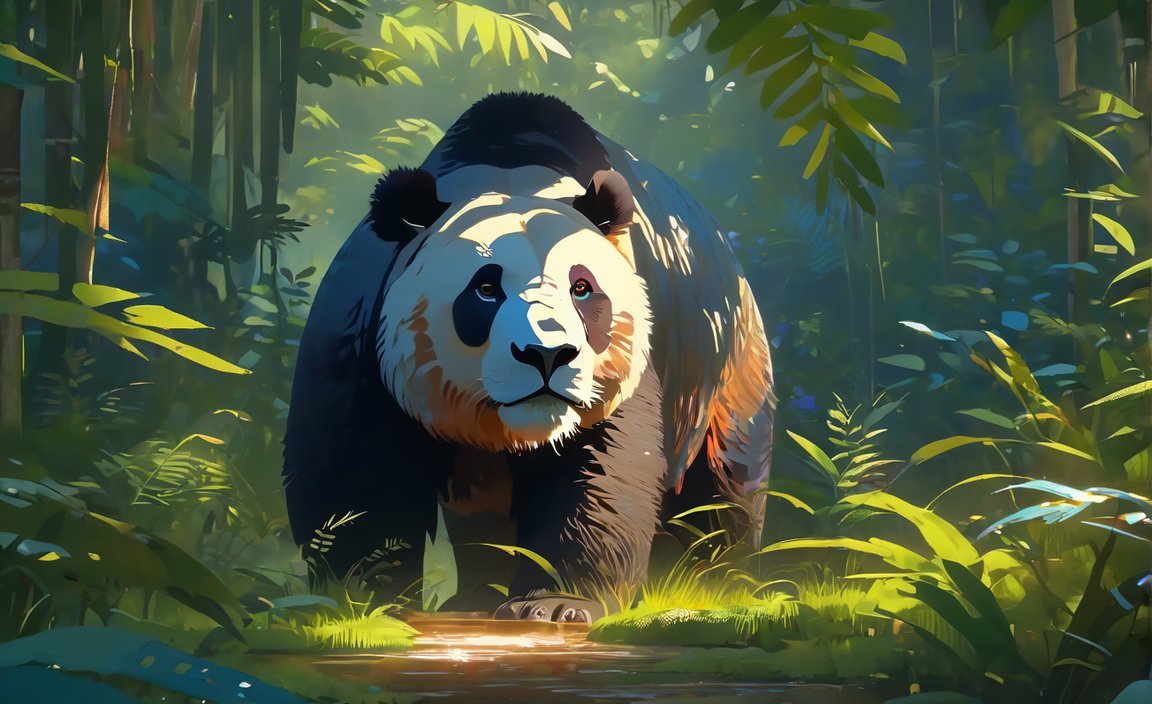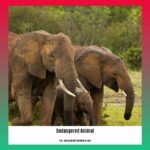Endangered Animals: Advocating Preservation and Inspiring Action
Discover the captivating world of endangered animals and their fight for survival in our rapidly changing planet. As threats to biodiversity continue to escalate, it is crucial for us to come together and take action to protect these vulnerable creatures. In this article, we delve into the intricacies of conservation biology and explore the main causes of species decline, such as habitat loss and poaching. Join us as we explore the critical work of seasoned wildlife biologists who dedicate their careers to study and advocate for the preservation of endangered animals. From analyzing population trends to collaborating with local communities, these experts develop effective strategies to mitigate threats and promote sustainable practices. Through their efforts, we are empowered to raise awareness and inspire others to join in the fight to preserve our planet’s most precious inhabitants.
Key Takeaways:
- Endangered animals are at risk of becoming extinct on Earth.
- Hunting for body parts and skins is a major cause of their decline.
- Habitat loss is a significant factor leading to the extinction of endangered animals.
- Climate change and pollution also pose threats to their survival.
- Some of the most endangered animals include the Javan Rhinoceros, Amur Leopard, Sunda Island Tiger, Mountain Gorillas, and Tapanuli Orangutan.
- The Javan Rhinoceros and Amur Leopard have very small populations remaining.
- The Sunda Island Tiger is critically endangered due to habitat loss and poaching.
- Conservation efforts, such as protected areas, stricter laws against poaching, and raising awareness, are crucial for saving endangered animals.
10 Lines on Endangered Animals

As a wildlife biologist dedicated to preserving endangered animals, I firmly believe in the importance of understanding the challenges these species face and taking action to protect them. Here are 10 lines that shed light on the plight of endangered animals and emphasize the need for conservation efforts.
1. Endangered animals are teetering on the edge of extinction, at risk of disappearing forever from our planet.
2. The reasons behind their decline are multifaceted, with factors such as illegal hunting and habitat destruction playing major roles.
3. Poaching, driven by the demand for animal parts and skins, poses a grave threat to the survival of many magnificent creatures.
4. Loss of habitat, primarily caused by human activities like deforestation and urbanization, deprives endangered animals of their homes.
5. Climate change, fueled by human-induced activities, alters ecosystems and disrupts the delicate balance upon which endangered animals rely.
6. Pollution, ranging from air and water pollution to plastic waste, further jeopardizes the health and survival of these vulnerable species.
7. Some of the world’s most critically endangered animals, such as the Javan Rhinoceros and the Amur Leopard, hover on the brink of extinction.
8. The Javan Rhinoceros, once abundant throughout Southeast Asia, now has only a handful of individuals left, making its conservation of utmost urgency.
9. The Amur Leopard, with a population of around 100 remaining in the wild, showcases the dire situation faced by many charismatic big cat species.
10. Preventing the extinction of endangered animals requires collaborative efforts, including creating protected areas, combating poaching, and raising awareness about the importance of biodiversity conservation.
Together, we have the power to make a difference and ensure a future where endangered animals thrive. By taking action and advocating for their preservation, we can protect our planet’s most vulnerable creatures and preserve the rich tapestry of life that surrounds us. Join the cause and be a voice for those who cannot speak for themselves.
Suggested Heading: Endangered Animals: A Plea for Preservation and Conservation
Here are some interesting facts that will amaze you about veterinarians. Learn about their remarkable work and the impact they have on animal health. Explore more on 10 interesting facts about veterinarians here.
Have you ever wondered how waterfalls are formed? Discover 10 interesting facts about waterfalls and delve into the mesmerizing beauty of these natural wonders. Check out more fascinating details here!
The majestic tiger, an endangered animal, holds a significant place in our ecosystem. Delve into the world of these magnificent creatures and understand their importance. Explore 10 lines on endangered animals tiger here.
Examples of Endangered Animals Across Different Ecosystems

Key Takeaways:
- Endangered animals face the risk of extinction due to factors such as habitat loss, poaching, and climate change.
- Bengal Tigers, Bornean Orangutans, and Sunda Island Tigers are some examples of endangered animals in different ecosystems.
- Mountain Gorillas, Tapanuli Orangutans, and Javan Rhinos are also critically endangered and need our attention.
- Preserving and protecting endangered species requires collective efforts, including supporting wildlife organizations, practicing responsible tourism, and advocating for stronger environmental policies.
The world’s ecosystems are home to a diverse array of species, many of which are unfortunately endangered. These animals face various threats to their survival, including habitat destruction, poaching, and climate change. By exploring examples of endangered animals across different ecosystems, we can gain a deeper understanding of the urgent need for their preservation.
One striking example of an endangered animal is the Bengal Tiger. Found in India, Burma, Bangladesh, Bhutan, and Nepal, these majestic creatures are under constant threat due to habitat loss and poaching. With a population of only around 3,900 individuals, their survival hangs in the balance.
Another endangered species worth mentioning is the Bornean Orangutan. Located in the Borneo ecosystem, these great apes face habitat destruction and are critically endangered, although exact population numbers are unknown. Their conservation is vital to maintain the delicate balance of their habitat and ensure their survival.
Moving to the Sunda Island, we find the endangered Sunda Island Tiger, also known as the Sumatran tiger. With an unknown population, these tigers are native to the Indonesian island of Sumatra. Illegal hunting and loss of their forest habitat threaten their existence.
In the mountainous regions of the Democratic Republic of Congo, Rwanda, and Uganda, we find another critically endangered species—the Mountain Gorillas. With an estimated population of approximately 1,063 individuals, these gentle giants are highly vulnerable to poaching and habitat loss. Efforts to protect their habitat and combat illegal wildlife trade are essential in ensuring their survival.
The Tapanuli Orangutan, found in the forests of North Sumatra, Indonesia, is also critically endangered. With a population of around 800 individuals, this distinct species faces significant threats from habitat destruction and fragmentation caused by deforestation.
Lastly, the Javan Rhinoceros deserves our attention. Once abundant, this species is now on the brink of extinction, with only around 72 individuals remaining in Indonesia and Vietnam. Habitat loss and poaching fueled by demand for rhinoceros horn are the main drivers of their decline.
Preserving and protecting endangered animals across different ecosystems requires collective efforts. Here are some ways individuals can contribute to their conservation:
- Donate to reputable wildlife organizations involved in conservation efforts.
- Support species-specific conservation programs and initiatives.
- Volunteer for conservation projects and wildlife rehabilitation centers.
- Educate yourself and others about endangered species and their habitats.
- Use sustainable and eco-friendly products to minimize environmental impact.
- Practice responsible tourism and respect wildlife habitats.
- Advocate for stronger environmental policies and legislation.
- Plant native species in your gardens to create wildlife-friendly habitats.
- Reduce, reuse, and recycle to minimize waste production.
- Support sustainable fishing and farming practices.
By taking action and supporting these initiatives, we can contribute to the preservation and recovery of endangered species. Together, we can make a positive difference and ensure the continuation of Earth’s biodiversity.
Sources:
- Wildlife Informer: 14 Examples of Endangered Species
- World Wide Fund for Nature: 10 of the world’s most endangered animals
Conservation Efforts and Initiatives to Protect Endangered Animals
As wildlife biologists and conservationists, we understand the urgent need to protect endangered animals and ensure the preservation of our planet’s biodiversity. Through our expertise and experience, we have witnessed the devastating effects of habitat loss, poaching, and climate change on these vulnerable species. In this article, we will explore the conservation efforts and initiatives aimed at safeguarding endangered animals and inspiring action towards their protection.
The Importance of Conservation Efforts
Conservation efforts play a vital role in preventing the decline and potential extinction of endangered animals. By focusing on preserving their habitats, mitigating threats, and promoting sustainable practices, we can work towards creating a future where these species thrive. Here are some key initiatives and approaches that contribute to the conservation of endangered animals:
Protecting and Restoring Habitats
Preserving and restoring habitats is crucial for the survival of endangered animals. Organizations like the World Wildlife Fund (WWF) actively work to protect natural areas and create safe havens for endangered species. By establishing protected areas, national parks, and wildlife reserves, we can provide these animals with the space and resources they need to thrive.
Combating Poaching
Illegal hunting and poaching pose significant threats to endangered animals. Organizations like the National Wildlife Federation play a critical role in combating poaching activities through law enforcement, community engagement, and supporting anti-poaching initiatives. By addressing the demand for animal parts and skins, we can curb the illegal wildlife trade and protect endangered species.
Raising Awareness and Education
Raising awareness about the importance of biodiversity conservation is essential for inspiring action. By educating the public, we can foster a sense of empathy and responsibility towards endangered animals. Organizations like the National Geographic Society and WWF utilize their platforms to share scientific knowledge, stories, and visual imagery, engaging people from all walks of life in the conservation movement.
Collaborating with Local Communities
Engaging and collaborating with local communities is crucial for the success of conservation efforts. By involving communities in conservation projects, we can ensure their active participation and promote sustainable practices that benefit both humans and wildlife. This collaborative approach fosters a sense of stewardship, empowering communities to protect and preserve their natural resources.
Supporting Policy Advocacy
Advocating for stronger environmental policies and legislation is vital for the protection of endangered animals. Organizations like the National Wildlife Federation work to defend and strengthen laws such as the Endangered Species Act. By promoting policies that prioritize wildlife conservation and habitat protection, we can create a regulatory framework that safeguards these vulnerable species.
Key Takeaways:
- Conservation efforts play a crucial role in protecting endangered animals and preserving biodiversity.
- Protecting and restoring habitats is essential for the survival of endangered species.
- Combating poaching, illegal hunting, and the illegal wildlife trade is crucial for their protection.
- Raising awareness and educating the public about endangered animals is key to inspiring action.
- Collaborating with local communities promotes sustainable practices and empowers them to protect wildlife.
- Advocating for stronger environmental policies and legislation is vital for the conservation of endangered species.
Sources:
- World Wildlife Fund: Conservation Initiatives
- National Wildlife Federation: Endangered Species Conservation
The Importance of Preserving Endangered Animals for Ecosystem Balance and Biodiversity
Conserving endangered animals is vital for maintaining ecosystem balance and biodiversity. These animals play a crucial role in the intricate web of life, and their preservation has far-reaching effects on the health of our planet and future generations. Let’s explore why it’s so important to protect these vulnerable creatures.
Conservation Efforts and Positive Impacts
Conservation projects worldwide are working tirelessly to bring back endangered and extinct wildlife species. By protecting these animals, we can restore biodiversity and ensure the well-being of entire ecosystems. Preserving iconic endangered species has a ripple effect, benefiting other endangered species and maintaining the delicate balance of biodiversity.
Role of Endangered Animals in Maintaining Biodiversity
Endangered animals have a vital ecological role in maintaining biodiversity. They contribute to critical processes like pollination, seed dispersal, and nutrient cycling. By safeguarding these animals, we ensure the continuation of these vital ecological functions that sustain all life on Earth.
Indicator Species and Environmental Quality
Endangered species act as indicators of environmental quality. Their decline can alert us to potential issues within our ecosystems. For example, the decline of species like bald eagles and peregrine falcons due to the use of harmful pesticides demonstrated the negative impacts on the ecosystem. Preserving endangered animals helps to maintain the overall health and balance of our environment.
Positive Impacts on Human Life
Preserving endangered animals not only benefits the species themselves but also has positive impacts on human life. It contributes to the availability of food supplies and creates job opportunities and economic growth. Additionally, biodiversity conservation is closely linked to human health, as ecosystems provide valuable services like clean air, water, and natural medicines.
Key Takeaways:
- Conservation efforts play a crucial role in restoring biodiversity and maintaining ecosystem balance.
- Endangered animals are essential for critical ecological processes, such as pollination and nutrient cycling.
- The decline of endangered species can signal potential environmental issues.
- Preserving endangered animals has positive impacts on human life, including food supplies, job creation, and human health.
Sources:
– International Union for Conservation of Nature (IUCN) Red List
– World Wildlife Fund (WWF)
FAQ
Q1: What does it mean for an animal to be endangered?
A1: An endangered animal is one that is at risk of becoming extinct on Earth. It is likely to face threats that could result in its complete disappearance.
Q2: What are the main causes of species decline?
A2: The main causes of species decline include habitat loss, poaching, climate change, and pollution. These factors can have a significant impact on the survival of endangered animals.
Q3: Can you provide examples of endangered animals?
A3: Some examples of endangered animals include the Javan Rhinoceros, Amur Leopard, Sunda Island Tiger, Mountain Gorillas, and Tapanuli Orangutan. These species are facing a high risk of extinction due to various threats.
Q4: How can individuals contribute to the protection of endangered species?
A4: There are several ways individuals can contribute to the protection of endangered species. They can donate to wildlife organizations, support species-specific conservation programs, volunteer for conservation projects, educate themselves and others about endangered species, use sustainable products, practice responsible tourism, advocate for stronger environmental policies, and create wildlife-friendly habitats.
Q5: Why is biodiversity preservation important?
A5: Biodiversity preservation is important because it ensures the health and stability of ecosystems. Endangered animals play vital roles in maintaining biodiversity, such as pollinating plants, dispersing seeds, and controlling populations of other species. Additionally, preserving biodiversity has positive impacts on food supplies, jobs, economies, and human health.
- Unveiling the Enigma: Mansoureh Khojasteh Bagherzadeh’s Public Appearances & Private Life in Iran - July 18, 2025
- Unveiling the Mystery: Mansoureh Khojasteh Bagherzadeh’s Husband: A Rare Glimpse into a Private Life - July 18, 2025
- Unveiling Masoud Khamenei’s Mother: Power, Influence, and Iran’s Future - July 18, 2025
















